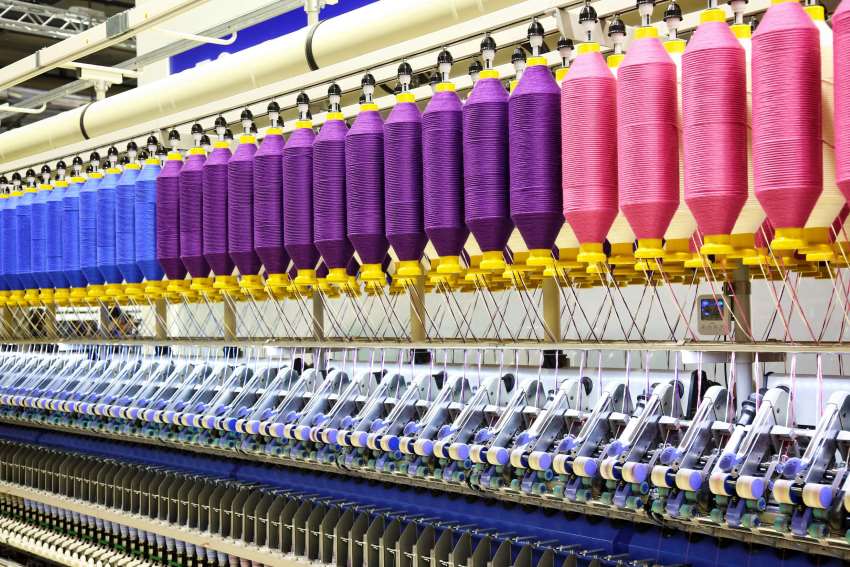"After China, European Commission is also prepping for retaliatory tariff on US products. The EU placed additional duties on €2.8 billion ($3.2 billion) worth of US goods, adding that it will subject €3.6 billion ($4.2 billion) of American products to high tariffs ‘at a later stage’ — either ‘in three years' time or after a positive finding in a WTO dispute settlement.’ As per European Commission's estimates, EU steel and aluminum exports affected by the US measures were worth €6.4 billion ($7.45 billion). In March 2018 the Trump administration signaled the imposition of 25- and 10-per cent tariffs on steel and aluminum, respectively. The tax hike was imposed to Europe on June 1."
 After China, European Commission is also prepping for retaliatory tariff on US products. The EU placed additional duties on €2.8 billion ($3.2 billion) worth of US goods, adding that it will subject €3.6 billion ($4.2 billion) of American products to high tariffs ‘at a later stage’ — either ‘in three years' time or after a positive finding in a WTO dispute settlement.’ As per European Commission's estimates, EU steel and aluminum exports affected by the US measures were worth €6.4 billion ($7.45 billion). In March 2018 the Trump administration signaled the imposition of 25- and 10-per cent tariffs on steel and aluminum, respectively. The tax hike was imposed to Europe on June 1.
After China, European Commission is also prepping for retaliatory tariff on US products. The EU placed additional duties on €2.8 billion ($3.2 billion) worth of US goods, adding that it will subject €3.6 billion ($4.2 billion) of American products to high tariffs ‘at a later stage’ — either ‘in three years' time or after a positive finding in a WTO dispute settlement.’ As per European Commission's estimates, EU steel and aluminum exports affected by the US measures were worth €6.4 billion ($7.45 billion). In March 2018 the Trump administration signaled the imposition of 25- and 10-per cent tariffs on steel and aluminum, respectively. The tax hike was imposed to Europe on June 1.
Commissioner for Trade Cecilia Malmström reiterated the rules of international trade, which EU has developed over the years hand in hand with its American partners, cannot be violated without a reaction from their side. EU’s response is measured, proportionate and fully in line with WTO rules. If the US removes its tariffs, its measures will also be removed.
over the years hand in hand with its American partners, cannot be violated without a reaction from their side. EU’s response is measured, proportionate and fully in line with WTO rules. If the US removes its tariffs, its measures will also be removed.
EU-US trade ties
As per Eurostat, the US was the largest partner for EU exports in 2017 and the second largest for the bloc's imports. At the same time, Germany emerged as the largest exporter to the US among EU member states. Between 2008 and 2017, the EU had a trade surplus with the US peaking at €122 billion ($142 billion) in 2015 and falling to €120 billion ($139.7 billion) in 2017. When it comes to EU exports to the US, which totaled €376 billion ($435 billion) in 2017, €6.4 billion ($7.45 billion) in tariff-hit goods pale in significance. Vice versa, €2.8 billion ($3.2 billion) worth of US goods subjected to EU duties stand nowhere near total US exports to the bloc, which amounted to €256 billion ($297.8 billion).
The EU’s major exports to the US comprise of machinery, packaged medicine, vehicles and medical and pharmaceutical equipment not targeted by the Trump administration's tariff spree. Germany, which accounted for 30 per cent of all EU exports to the US in 2017, views North America as its largest single export market for cars.
In line with other countries, Mexico also applied additional tariffs on $3 billion worth of US goods in early June, while India notified Washington on June 22 that it will impose higher tariffs on a number of products imported from the US, including agricultural products and industrial inputs, from August 4. Looking at the prevailing scenario, Gerry Rice, director of communications, IMF, stated that everybody loses in a protracted trade war, IMF encourages countries to work constructively together to reduce trade barriers and to resolve trade disagreements without resort to exceptional measures.












